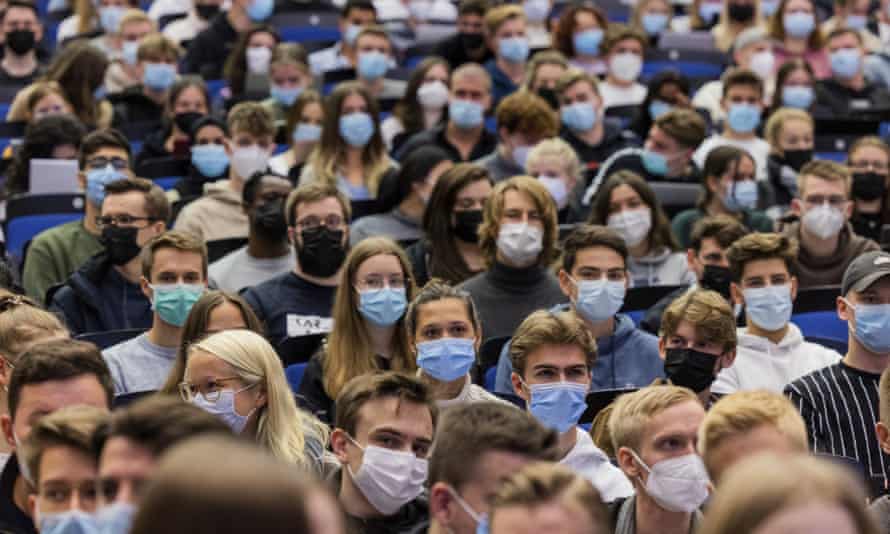
Concerns are mounting in Germany about a rapidly growing and hard to predict fourth wave of Covid-19 this autumn, as the government is in transition and flatlining vaccination rates lag behind those in the rest of western Europe.
An increasingly mobile population, a largely dismantled pop-up testing infrastructure and reduced staffing at hospitals have led some experts to warn that the government is facing a resurgent virus with less resolve than at previous stages of the pandemic.
“I am not relaxed about it,” said Hendrick Streeck, director of the institutes of virology and HIV research at Bonn University. “Capacity at intensive care units is reduced; we may have to factor in another influenza wave. Our grasp of the dynamic behind the infections is not great, but we have higher mobility,” Streeck said.

Germany’s disease control agency has warned of a “growing likelihood of infectious contacts” after reporting an incidence rate of 145 new infections per 100,000 residents – the highest recorded since May this year.
More people in Germany are infected with the virus than at the same point in 2020: according to the federal government’s own data 205,700 people were infectious on 29 October 2021 compared with 131,541 people on 29 October 2020.
At 75, the rolling seven-day average of deaths linked to the coronavirus in Germany is also higher than a year ago, when it was 44.
The number of Covid-19 patients in intensive care beds is roughly on a par with October 2020 levels, with 1,868 patients registered on Friday. Last autumn, cases kept on rising in spite of “lockdown light” restrictions, until hospital bed occupancy peaked, with about 5,700 cases being treated in the first week of January.
“We are at a critical stage of the pandemic”, said Gerald Gass, chair of the German Hospital Federation. “If this trend persists, we will be back to 3,000 patients on intensive care within two weeks”, he said.
The German health ministry said it was confident that clinics in the country would not have to invoke triage, when acute care cannot be provided to every patient in need because of lack of resources.
While levels of compliance with hygiene restrictions such as mask-wearing on public transport is high, Germany and its southern neighbour Austria lag behind other western European nations on vaccination rates. Sixty-six per cent of Germany’s population is fully vaccinated, compared with 68% in France, 71% in Italy and 80% in Spain.
Unlike some southern European states, Germany opted against making vaccination mandatory for specific sectors of industry.
A survey commissioned by the health ministry suggests the rate of vaccinations is unlikely to improve in the near future: 65% of those who have so far refused the jab said they would “in no way” take a vaccine in the next two months, while a further 23% said they would “probably not” let themselves be immunised.
In spite of the rising numbers, the three parties likely to make up Germany’s next government have agreed in principle to end the “epidemic situation of national relevance” by the end of November.
But 25 November would not be a “freedom day” as celebrated by the British government, say politicians from the Social Democratic party, which is expected to lead the next government in a coalition with the Greens and the Free Democratic party.
While the parties say they plan to continue to enforce mandated mask-wearing, social distancing and limited access to cultural venues for those without double vaccinations, they have effectively ruled out another nationwide lockdown including school closures and curfews.


